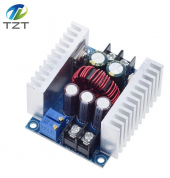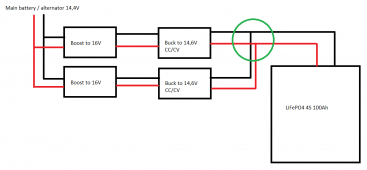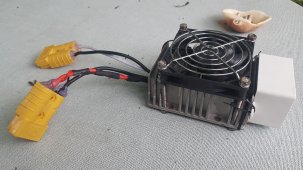Hello,
I am planning on building a DIY LiFePO4 battery (4S 100Ah) to put on a van. After some research I came across different charging solutions such as a Renogy DC-DC Battery Charger or Victron Orion-Tr ones. I was wondering if I can achieve a not-so-good-but-cheaper solution by using these CC/CV modules that can handle up to 20A with proper cooling:

The cons are obviously (but not limited to):
- This is just a buck converter, so if the main battery / alternator is giving me 14,4V I'll get at most 14V out of it, if not less.
- If the alternator is a "smart" one I may even go lower to 13,8V after a while with the van started, therefore the charging voltage would be lower.
So my questions are:

The green circle is my concern.
Thank you for your time!
I am planning on building a DIY LiFePO4 battery (4S 100Ah) to put on a van. After some research I came across different charging solutions such as a Renogy DC-DC Battery Charger or Victron Orion-Tr ones. I was wondering if I can achieve a not-so-good-but-cheaper solution by using these CC/CV modules that can handle up to 20A with proper cooling:

The cons are obviously (but not limited to):
- This is just a buck converter, so if the main battery / alternator is giving me 14,4V I'll get at most 14V out of it, if not less.
- If the alternator is a "smart" one I may even go lower to 13,8V after a while with the van started, therefore the charging voltage would be lower.
So my questions are:
- If I am OK at charging the LiFePO4 battery at a lower voltage (let's say 13,5 or 14V) would this device work?
- Efficiency asides, what if I put a boost converter before to convert the alternator voltage to, let's say 16V and then regulate it back to 14,6V?
- Could I put a pair of boost-buck converters set in parallel in order to get higher current without damaging these little devices.
- (my main concern is regarding the voltage outputs of the 2 buck converters not matching 100% and causing some problem)

The green circle is my concern.
Thank you for your time!






